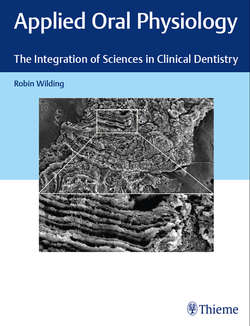Читать книгу Applied Oral Physiology - Robin Wilding - Страница 77
На сайте Литреса книга снята с продажи.
4.3.7 Cross-Infection Control
ОглавлениеIt is instructive to consider the surgical classification of wounds according to the level of contamination. This classification ranges through four progressive levels of contamination, starting with clean and increasing through intermediary levels, clean/contaminated, contaminated/dirty, to dirty. According to these criteria, oral surgery wounds would be classified as clean/contaminated. The endogenous nature of most oral diseases therefore suggest that cross-infection would be most effective when directed toward intraoral control of potential pathobionts. For example, the importance of using a rubber dam barrier, to exclude salivary organisms during endodontic treatment, has been well established and is considered a best practice by endodontists. The use of a barrier rubber dam has also been recommended for restorative procedures when attempts are made by the operator to remove all infected caries, leaving a sterile cavity to restore.
There are other measures which have been recommended, which reduced the burden of endogenous contamination. For many years, it has been considered as the best practice to remove the plaque around the root surface of a tooth before extracting it. The purpose of this measure is to reduce the amount of dental plaque forced into the socket during application of the extraction forceps. In view of the endogenous origins of bacteria which cause an infected (dry) socket, a pre-extraction prophylaxis is a sensible precaution (see Chapter 5.3.2 Healing of a Tooth Socket). A similar preparation of a surgical site has been a recommended practice by many implant surgeons. An incision into the gingival sulcus, when creating a surgical flap for the placement of an implant fixture, releases orders of magnitude more pathobionts into the surgical site than might enter on the blade of the scalpel on which some airborne organisms may have alighted. For this reason, prophylaxis of teeth adjacent to a planned surgical site should proceed any surgery so as to reduce the unintentioned spread of plaque organisms.
The term cross-infection may deserve an expanded interpretation, as the non-communicable diseases of the oral cavity are not caused by foreign organisms transmitted from other individuals, or indeed by any single species of organism. Viral infections such as herpes, Epstein-Barr and AIDS are communicable via the oral cavity, though in quite specific conditions of transmission.
The trend toward central sterilization in an effort to reduce cross-contamination in the operating area should be seen in context with the threat to infection by endogenous pathobionts. It might be well to recall the Roman writer Cicero's warning that “The enemy is within the gates… it is our own criminality that we have to contend with.”
